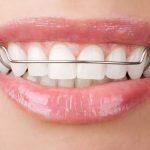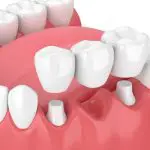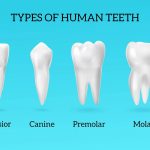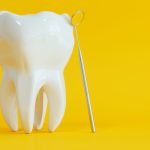Why Your Bottom Front Teeth Hurt and How to Relieve the Pain: A Quick Guide
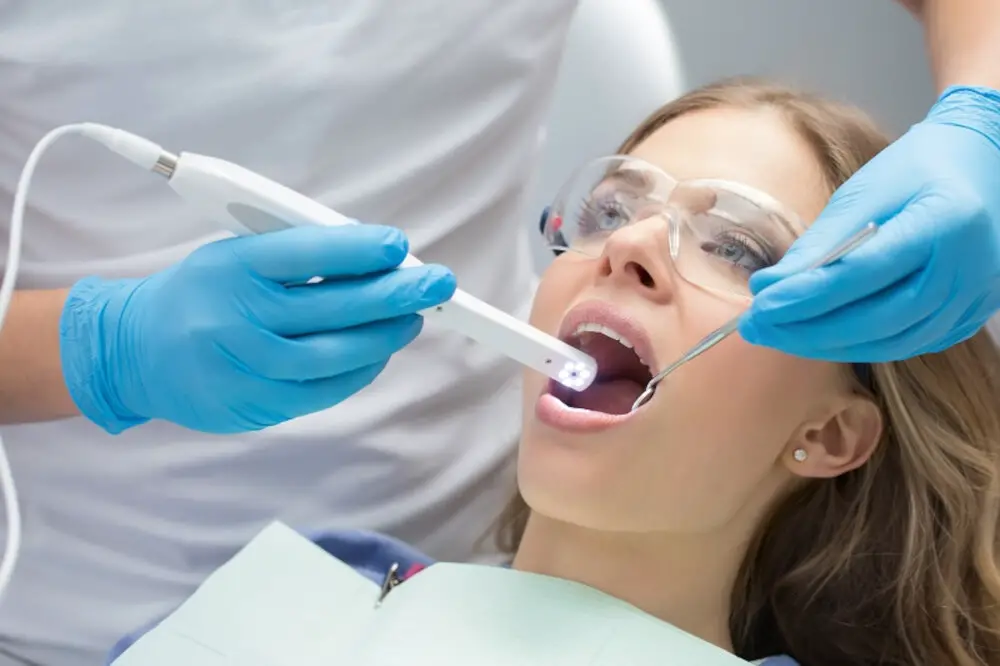
Have you ever experienced a sharp, stabbing pain in your lower front teeth? The kind of pain that feels like it’s shooting straight to your brain and making you wince with discomfort? If so, you’re not alone. Many people suffer from tooth sensitivity or pain in their lower front teeth, and it can be caused by a variety of factors. Understanding what’s causing your pain is the first step to finding relief, and this quick guide is here to help. In this guide, we’ll explore some of the most common reasons why your bottom front teeth may be hurting, from simple tooth sensitivity to more severe dental issues. We’ll also provide some tips on how to relieve the pain and prevent it from coming back in the future. Whether you’re dealing with occasional discomfort or chronic tooth pain, this guide will give you the knowledge and tools you need to take control of your dental health and get back to feeling your best. So let’s dive in and learn more about why your bottom front teeth may be hurting, and what you can do to find relief.
Bottom front teeth pain can be a source of discomfort and anxiety for many people. There are several reasons why this may occur, including gum disease, tooth decay, injury, or misalignment of teeth. Gum disease, also known as periodontitis, can cause the gums to recede, exposing the sensitive roots of the teeth. Tooth decay, on the other hand, can lead to cavities that cause pain and sensitivity. Injuries to the mouth or teeth, such as a fall or sports-related incident, can also cause pain in the bottom front teeth. Misaligned teeth can put pressure on certain teeth, causing pain and discomfort. Regardless of the cause, there are various ways to relieve the pain and discomfort associated with bottom front teeth pain, such as using over-the-counter pain medications, practicing good oral hygiene, and visiting a dentist for treatment.
Identifying the cause of pain is crucial for effective pain management and treatment. Pain is the body’s way of signaling that something is wrong, and ignoring it can lead to further complications. In the case of tooth pain, identifying the underlying cause is essential to prevent further damage to the affected tooth and surrounding tissues. Pain can be caused by a variety of factors such as decay, injury, gum disease, or teeth grinding, and each requires a specific treatment approach. By accurately identifying the cause of pain, a dentist can provide appropriate treatment and help alleviate the discomfort, allowing the patient to experience relief and improve their overall oral health.
Common Causes of Bottom Front Teeth Pain

The bottom front teeth pain can be caused by a variety of factors, ranging from dental issues to other underlying health conditions. One of the most common causes of this type of pain is gum disease, which is characterized by inflammation and infection of the gums. This condition can cause the gums to recede, exposing the sensitive roots of the teeth and leading to pain and sensitivity. Poor oral hygiene, smoking, and genetic factors can all contribute to the development of gum disease. In addition to pain, gum disease can also cause bleeding gums, bad breath, and loose teeth. Another common cause of bottom front teeth pain is tooth decay, which occurs when bacteria in the mouth produce acids that eat away at the enamel of the teeth. This can cause cavities to form, which can lead to pain and sensitivity. Tooth decay can also cause the teeth to become discolored and weakened, and can eventually lead to tooth loss if left untreated. Other dental issues that can cause bottom front teeth pain include cracked or chipped teeth, abscesses, and tooth grinding or clenching. If you are experiencing pain in your bottom front teeth, it is important to see a dentist as soon as possible to identify the underlying cause and receive appropriate treatment.
Gum disease or infection, also known as periodontal disease, is a common condition that affects the gums and surrounding tissues of the teeth. It is caused by bacteria that accumulate on the teeth and gums, which can lead to inflammation, bleeding, and eventually, tooth loss. Symptoms of gum disease include red, swollen, and tender gums, bad breath, and a receding gum line. If left untreated, gum disease can progress to a more severe form called periodontitis, which can cause irreversible damage to the gums and bone tissue. Treatment options for gum disease include deep cleaning, antibiotics, and surgery in severe cases. Maintaining good oral hygiene practices such as brushing and flossing regularly and visiting the dentist for regular check-ups can help prevent gum disease from occurring.
Tooth decay, also known as cavities, is a common dental problem caused by the breakdown of tooth enamel due to the production of acid by bacteria in the mouth. This can occur due to poor oral hygiene, a diet high in sugar and starches, or other factors such as dry mouth. The decay can lead to sensitivity, pain, and even infection if left untreated. Treatment options range from fillings to root canals, depending on the severity of the decay. It is important to maintain good oral hygiene habits and visit the dentist regularly to prevent and address tooth decay.
Injury or trauma to the teeth or gums can occur due to various reasons such as accidents, sports injuries, or even biting down too hard on something. This type of injury can cause immediate pain and discomfort, and if left untreated, can lead to further complications such as infections or tooth loss. Symptoms of tooth or gum trauma may include swelling, bleeding, tooth sensitivity, or even loose teeth. It is important to seek immediate dental care if any of these symptoms occur to prevent further damage to the affected area. Treatment for tooth or gum trauma may include restorative procedures such as dental bonding or crowns, or even surgery in severe cases.
Grinding or clenching of teeth, also known as bruxism, can cause significant pain and discomfort in the bottom front teeth. This condition is often caused by stress or anxiety, and can occur both during the day and while sleeping. The constant pressure and friction placed on the teeth can result in wear and tear, as well as sensitivity. To alleviate the pain caused by bruxism, it is important to address the underlying cause by managing stress and anxiety through relaxation techniques or therapy. Additionally, wearing a nightguard can help protect the teeth from further damage while sleeping.
Dental procedures are a crucial aspect of maintaining good oral health, and they can range from routine cleanings to more complex treatments like root canals or extractions. When it comes to relieving pain in the bottom front teeth, there are a few different procedures that may be recommended depending on the cause of the discomfort. For example, if the pain is due to gum disease, a deep cleaning or scaling and root planing may be necessary. If there is decay or damage to the tooth, a filling, crown, or even a root canal may be required to alleviate the pain. It’s important to work closely with your dentist to determine the best course of action for your specific situation and to maintain regular dental checkups to prevent future issues.
Symptoms and Signs of Bottom Front Teeth Pain
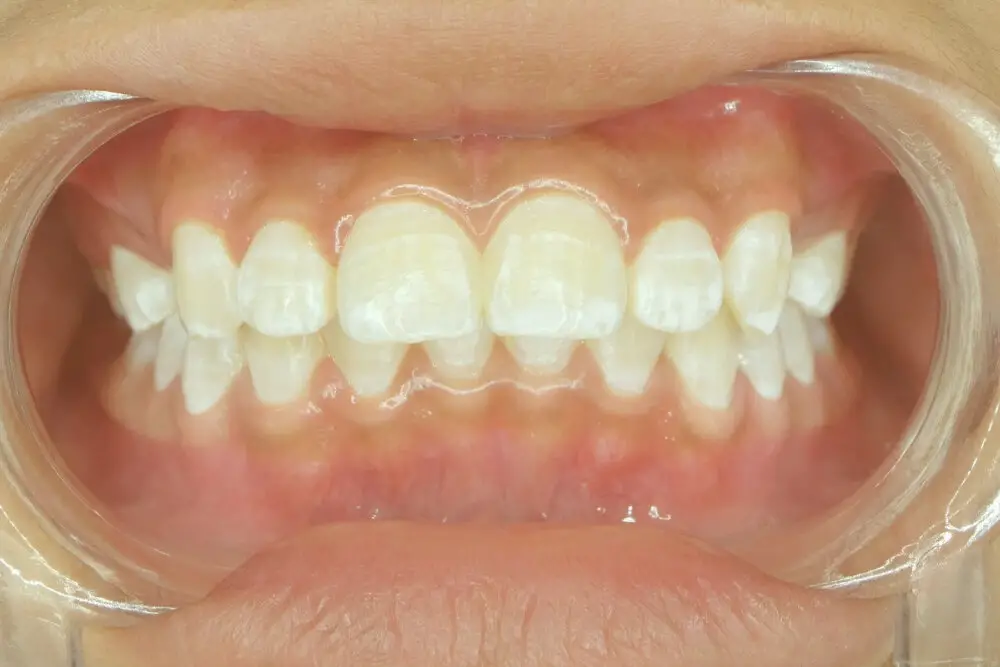
Bottom front teeth pain can be caused by a variety of factors, ranging from minor issues such as tooth decay or gum disease to more serious problems like misaligned teeth or a jaw injury. The symptoms and signs of bottom front teeth pain can vary depending on the underlying cause, but some common indicators may include sensitivity to hot or cold temperatures, swelling or redness in the gums, difficulty chewing or biting down, and a persistent ache or throbbing sensation in the affected area. In some cases, the pain may be accompanied by other symptoms such as headaches, earaches, or jaw stiffness. One of the most important things to do when experiencing bottom front teeth pain is to seek prompt dental care. Ignoring the symptoms or delaying treatment can lead to more serious dental problems down the line, such as tooth loss or gum recession. Depending on the cause of the pain, treatment options may include dental fillings, root canal therapy, orthodontic treatment, or oral surgery. In addition to professional dental care, there are also several home remedies that may help to alleviate bottom front teeth pain, such as applying a cold compress to the affected area, taking over-the-counter pain medication, or using a desensitizing toothpaste. By taking a proactive approach to dental health and seeking appropriate treatment for bottom front teeth pain, you can help to prevent further complications and maintain a healthy, pain-free smile.
The sensation of pain can vary greatly, and two commonly described types of pain are sharp and dull. Sharp pain is characterized by an intense, stabbing sensation that may feel like a sudden jolt. In contrast, dull pain is often described as a more persistent ache or soreness. When it comes to dental pain, the type of pain you experience can provide important clues as to the underlying cause. For example, sharp pain may indicate a tooth fracture or nerve sensitivity, while dull pain may be a sign of gum disease or tooth grinding. Understanding the nature of your pain can help you identify the best course of action for relief.
Many people experience sensitivity to hot or cold temperatures in their teeth, particularly in the bottom front teeth. This discomfort can be caused by a variety of factors, including tooth decay, gum recession, or even brushing too aggressively. When the protective layer of enamel on the teeth wears down, the underlying dentin is exposed, which can cause sensitivity to hot or cold temperatures. The pain can range from mild to severe and can be triggered by hot or cold drinks, cold weather, or even breathing in cold air. There are several ways to relieve the pain of sensitive teeth, including using a desensitizing toothpaste, avoiding acidic or sugary foods and drinks, and seeing a dentist for treatment options such as fillings or gum grafts.
Swollen or red gums can be a sign of various oral health issues, such as gingivitis or periodontitis. Gingivitis is an early stage of gum disease that can cause inflammation, bleeding, and tenderness in the gums. If left untreated, it can lead to more severe periodontitis, which can cause the gums to pull away from the teeth, resulting in tooth loss. Poor oral hygiene, smoking, and certain medications can increase the risk of developing gum disease. To relieve the pain and discomfort caused by swollen or red gums, practicing good oral hygiene, such as brushing and flossing regularly, using an antiseptic mouthwash, and avoiding tobacco use, can help prevent and treat gum disease.
Bleeding from gums is a common dental issue that can be quite alarming. It can be caused by a variety of factors, such as gum disease, plaque buildup, or even brushing too hard. If left untreated, bleeding gums can lead to more serious dental problems, such as tooth loss and bone damage. In order to prevent this from happening, it is important to practice good oral hygiene, eat a balanced diet, and visit the dentist regularly. Additionally, using a soft-bristled toothbrush and gentle brushing techniques can help reduce the risk of gum bleeding. If you are experiencing bleeding gums, it is important to talk to your dentist to determine the cause and develop a treatment plan.
Loose teeth can be a worrying and uncomfortable experience. This occurs when the tooth loses support from the surrounding bone and tissues, causing it to move or wiggle. There can be several reasons for loose teeth, including gum disease, injury, or grinding the teeth. When left untreated, loose teeth can lead to tooth loss or even infection. It is crucial to seek dental attention as soon as possible to address the underlying cause and prevent further damage. In some cases, a dentist may recommend a dental splint or even extraction to alleviate pain and ensure the health of your teeth and gums.
How to Relieve Bottom Front Teeth Pain
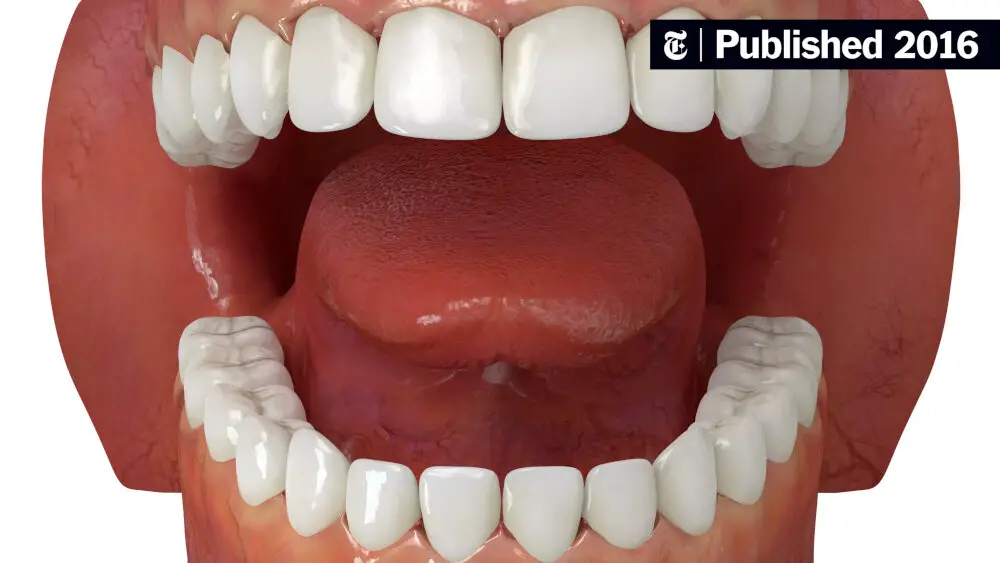
Bottom front teeth pain can be an uncomfortable and distracting experience. It can arise due to a variety of reasons, such as cavities, gum disease, or tooth decay. The pain can range from mild to severe, depending on the cause of the discomfort. However, there are several ways to alleviate the pain and discomfort associated with bottom front teeth pain. First and foremost, maintaining proper oral hygiene is crucial to prevent tooth decay and gum disease. Regular brushing, flossing, and rinsing with an antibacterial mouthwash can help keep teeth and gums healthy and free of harmful bacteria. In addition to practicing good oral hygiene, there are other ways to relieve bottom front teeth pain. Over-the-counter pain medications, such as ibuprofen or acetaminophen, can help alleviate pain and reduce inflammation. Applying a cold compress to the affected area can also provide relief by numbing the area and reducing swelling. Finally, avoiding foods and drinks that are too hot or cold and limiting sugary or acidic foods can help prevent further damage to the teeth and gums. By taking these steps, individuals can effectively manage bottom front teeth pain and maintain good oral health.
Practicing good oral hygiene is paramount for maintaining healthy teeth and gums. Brushing your teeth twice a day with fluoride toothpaste and flossing daily helps to remove plaque and prevent the buildup of harmful bacteria in your mouth. Additionally, using mouthwash after brushing can help to kill any remaining bacteria and freshen your breath. Regular dental check-ups are also crucial for identifying any dental issues early on and treating them before they become more severe. Neglecting your oral hygiene can lead to a range of dental problems, including tooth decay, gum disease, and painful toothaches, so it’s essential to make oral hygiene a priority in your daily routine.
If you’re experiencing pain in your bottom front teeth, pain relievers can provide temporary relief. Nonsteroidal anti-inflammatory drugs (NSAIDs) such as ibuprofen or aspirin can help reduce inflammation and alleviate discomfort. Acetaminophen can also be effective in managing tooth pain. Be sure to follow the recommended dosage and consult with your healthcare provider if you have any underlying medical conditions or take other medications. It’s important to note that pain relievers only provide temporary relief and do not address the underlying cause of tooth pain. Therefore, it’s crucial to seek professional dental care to address the root of the problem and prevent further pain and complications.
If you’re experiencing pain in your bottom front teeth, applying a cold compress is one of the simplest and most effective ways to relieve the pain. A cold compress can help to reduce inflammation and swelling, which are often the main causes of tooth pain. You can make a cold compress by wrapping a few ice cubes in a towel or using a gel pack that has been chilled in the refrigerator. Apply the compress to the affected area for 15-20 minutes at a time, several times a day. This should help to numb the pain and reduce any discomfort you may be feeling. Remember to always wrap the compress in a towel to avoid direct contact with your skin, as this can cause damage.
Using desensitizing toothpaste can be an effective way to relieve the pain and discomfort caused by sensitive bottom front teeth. This type of toothpaste contains compounds that help to block nerve signals from reaching the tooth’s pulp, reducing sensitivity. Additionally, it may also help to strengthen the enamel, reducing the risk of further damage and sensitivity. When using desensitizing toothpaste, it’s important to follow the instructions carefully and use it regularly for best results. It’s also a good idea to avoid foods and drinks that are particularly hot, cold, or acidic, as these can aggravate sensitivity.
If you frequently experience pain in your bottom front teeth, it may be due to teeth grinding or clenching. One way to alleviate this pain is to wear a mouthguard. A mouthguard is a protective device that fits over your teeth to cushion them against grinding or clenching. It is made of a soft and pliable material that molds to the shape of your teeth and can be custom-made by a dentist or purchased over-the-counter. Wearing a mouthguard while sleeping or during high-stress activities can reduce the pressure on your teeth and prevent further damage. Don’t let the pain continue to bother you – try wearing a mouthguard to protect your teeth and alleviate discomfort.
When to See a Dentist
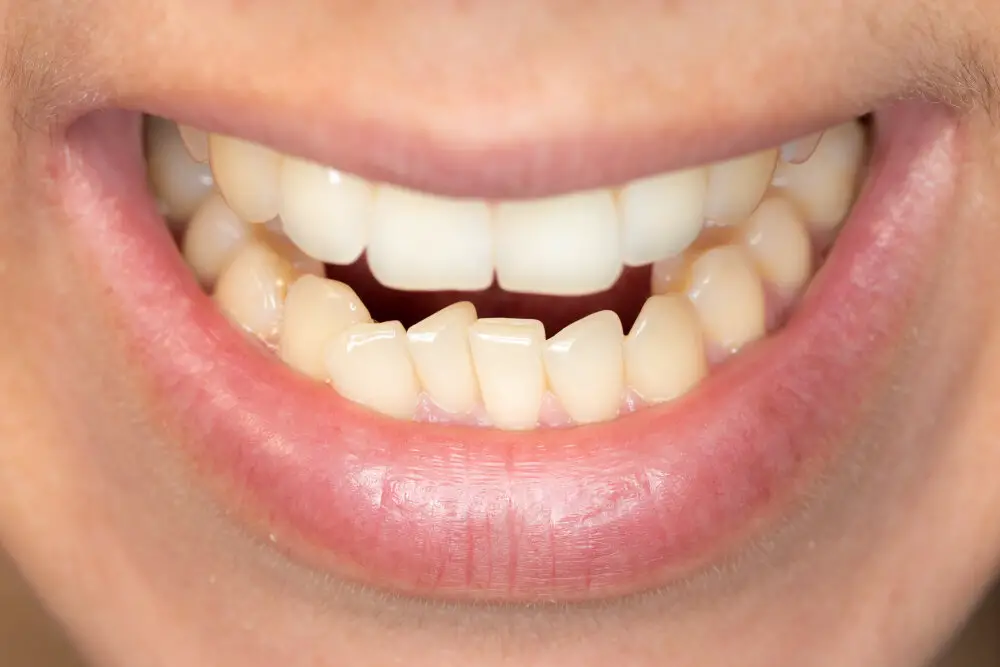
If you are experiencing pain or discomfort in your bottom front teeth, it is important to see a dentist as soon as possible. Pain in this area can be caused by a variety of issues, ranging from minor to serious. For example, it could be as simple as a cavity or gum disease, or it could be a more serious issue such as a cracked tooth or an abscess. No matter what the cause, it is important to see a dentist to determine the root of the problem and to begin treatment. In addition to pain or discomfort, there are other signs that it may be time to see a dentist. For example, if you notice swelling or redness in your gums, or if you have a bad taste in your mouth, it could be a sign of a more serious dental issue. Additionally, if you have persistent bad breath or notice any changes in the appearance of your teeth or gums, it is important to see a dentist. By addressing dental issues early on, you can avoid more serious problems down the road and maintain good oral health.
Severe or persistent pain is a cause for concern when it comes to your bottom front teeth. It can be a sign of a more serious dental issue, such as tooth decay or gum disease. Pain can also be a result of grinding or clenching your teeth, which can lead to enamel erosion and tooth sensitivity. In addition, pain can be caused by trauma to the teeth or jaw, such as a sports injury or car accident. It is important to address severe or persistent pain by seeking the advice of a dental professional, who can diagnose the underlying issue and provide appropriate treatment. Ignoring the pain can lead to further damage and complications, so it is best to take action as soon as possible.
One possible paragraph could be:In addition to pain and sensitivity, signs of infection in the gums around the bottom front teeth may include redness, swelling, tenderness, bleeding, and pus. The gums may also recede or pull away from the teeth, exposing the roots and making them more vulnerable to decay and damage. Bad breath or a bad taste in the mouth could also indicate the presence of harmful bacteria or toxins. If left untreated, the infection could spread to other parts of the mouth and even the body, leading to more serious health problems. Therefore, it is important to seek professional dental care if you experience any of these symptoms or if you have any concerns about your oral health.
Loose or broken teeth can be a source of immense discomfort and pain. There are various reasons for this condition, such as gum disease, tooth decay, trauma, or injury. It can cause sensitivity while eating or drinking, and even a slight touch can trigger sharp pain. If left untreated, the condition can worsen, leading to more severe dental issues. Depending on the severity of the problem, treatment options can range from a simple filling to more extensive procedures like root canal therapy or tooth extraction. Therefore, seeking professional help is crucial to prevent further damage and alleviate the pain.
Difficulty eating or speaking can be a frustrating experience that affects your daily routine. This is especially true when the pain is located in the bottom front teeth, which are crucial for biting and chewing. The discomfort can be caused by a variety of factors, including cavities, gum disease, or even a misaligned bite. It’s essential to seek the advice of a dental professional if you experience any pain or discomfort in your teeth. They can determine the root cause of the issue and recommend the appropriate treatment to relieve your pain and restore your ability to eat and speak comfortably.
Bottom front teeth pain can be caused by a variety of factors, including tooth decay, gum disease, teeth grinding or clenching, trauma, and even sinus infections. Common symptoms of bottom front teeth pain are sensitivity to hot or cold temperatures, pain when biting or chewing, swollen or bleeding gums, and visible cavities or chips in the teeth. In some cases, the pain may be accompanied by headaches or earaches. If left untreated, bottom front teeth pain can worsen and lead to more serious dental problems, so it is important to seek professional dental care as soon as possible.
If you’re experiencing pain in your bottom front teeth, there are a few things you can do at home to relieve the discomfort. One of the most effective remedies is to rinse your mouth with warm salt water. This can help reduce inflammation and kill any bacteria that may be causing the pain. You can also try applying a cold compress to the affected area for 10-15 minutes at a time. This can help numb the pain and reduce swelling. Over-the-counter pain relievers like acetaminophen or ibuprofen may also be beneficial, but be sure to follow the recommended dosage instructions. Lastly, it’s important to maintain good oral hygiene habits, such as brushing twice a day and flossing daily, to prevent any further issues.
It’s essential to seek professional dental care whenever necessary, as dental problems can worsen and cause severe pain and discomfort if left untreated. Neglecting dental issues can also lead to more substantial oral health problems, including gum disease, tooth decay, and even tooth loss. Regular dental check-ups can help detect problems early, preventing them from becoming more severe and costly to treat. A dentist can provide proper diagnosis, treatment, and preventative measures that can help maintain optimal oral health. Therefore, seeking professional dental care when necessary can help alleviate pain, prevent dental problems from worsening, and maintain a healthy smile.
Conclusion
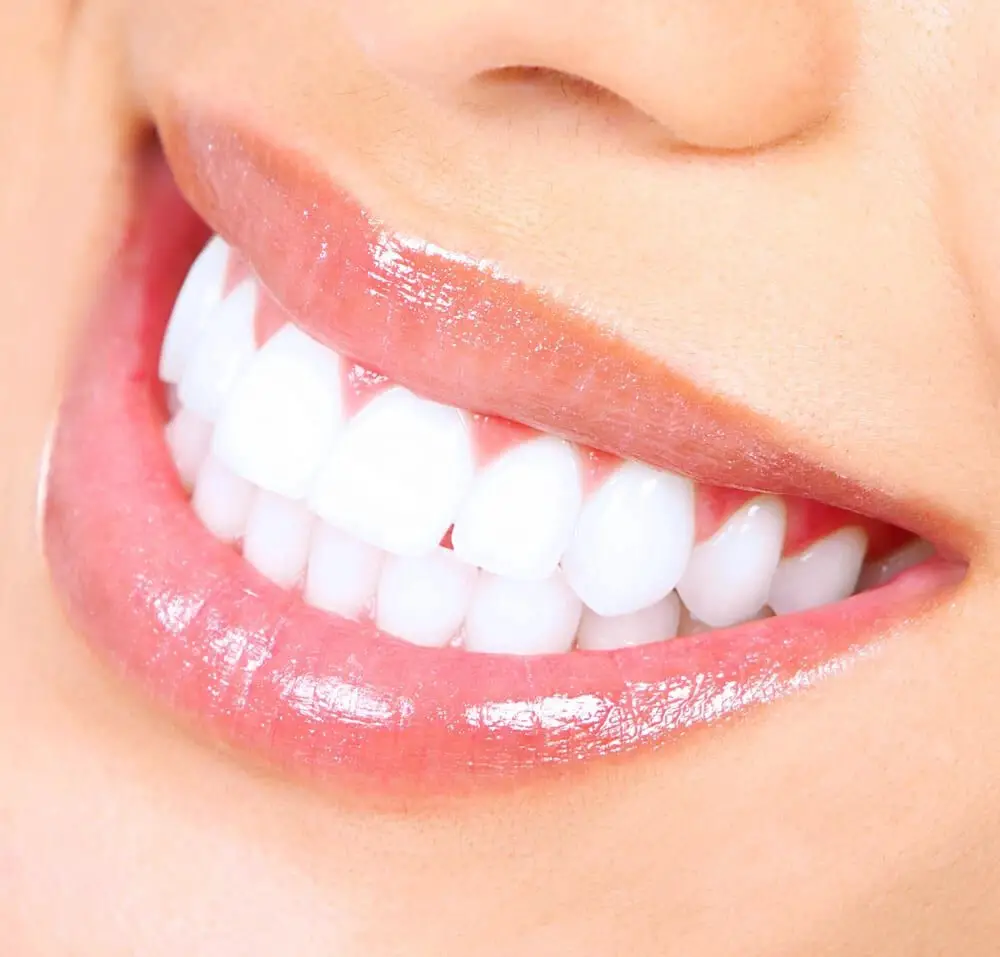
In conclusion, experiencing pain in your bottom front teeth can be a distressing and uncomfortable experience. However, it’s not uncommon, and there are various reasons why it may occur. Some of the most common causes include tooth decay, gum disease, and teeth grinding. Fortunately, there are also several ways to relieve the pain, including over-the-counter painkillers, hot and cold compresses, and saltwater rinses. It’s essential to pay attention to any discomfort you may be feeling and seek professional dental advice if the pain persists or worsens. Taking care of your dental health through regular brushing, flossing, and dental check-ups is also crucial in preventing further dental problems and maintaining overall oral health.

